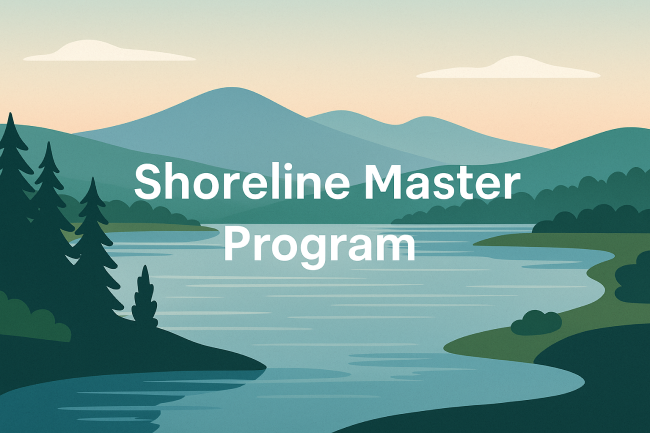Shoreline Master Program: A Comprehensive Guide to Sustainable Shoreline Management

The Shoreline Master Program is a critical land-use policy in Washington State designed to manage and protect the natural and built environments along shorelines. Enforced through local governments and overseen by the Washington State Department of Ecology, the SMP ensures responsible development, preserves ecological functions, and guarantees public access to water bodies like rivers, lakes, and marine areas. This article will provide an in-depth overview of the Shoreline Master Program and examine how it is implemented in various counties and cities including Chelan County, Mason County, and Seattle.
What is the Shoreline Master Program?
The Shoreline Master Program (SMP) is a local planning and regulatory document required by Washington’s Shoreline Management Act of 1971. It governs the use, development, restoration, and protection of shorelines that include:
-
Marine waters
-
Lakes larger than 20 acres
-
Rivers and streams with a flow greater than 20 cubic feet per second
-
Associated wetlands and floodplains
Each city and county with qualifying shorelines is responsible for developing an SMP tailored to its unique geographic and ecological conditions.
Core Objectives of the Shoreline Master Program
Environmental Protection
The SMP emphasizes preserving the ecological integrity of shoreline areas. It enforces the concept of “no net loss” of ecological function, meaning that development and human use should not degrade the natural qualities of shoreline ecosystems.
Public Access
Ensuring public access to water bodies is another cornerstone of the SMP. Whether through parks, walkways, or waterfront trails, the program seeks to enhance the public’s ability to enjoy the state’s water resources.
Responsible Development
The SMP guides the location and design of shoreline development. It restricts high-impact activities in sensitive areas and supports sustainable economic activities like water-oriented recreation and tourism.
Key Components of the SMP
Shoreline Inventory and Characterization
Local governments begin by inventorying all shoreline resources—mapping vegetation, wildlife habitats, water quality, and existing land use patterns. This step informs the planning process and helps determine where development is suitable.
Shoreline Designations
Each stretch of shoreline is assigned a designation that reflects its characteristics and intended uses. Common shoreline environment designations include:
-
Natural – Highly sensitive, limited use
-
Urban Conservancy – Balanced development and conservation
-
Shoreline Residential – Moderate development with buffer rules
-
High Intensity – Commercial, industrial, or mixed-use areas
Regulations and Permitting
The SMP sets forth zoning-like rules that control what activities are allowed, prohibited, or conditionally permitted. Any new project in the shoreline jurisdiction must comply with SMP rules, and in many cases, requires a Shoreline Substantial Development Permit.
Implementation and Oversight
Local governments implement the Shoreline Master Program through land use permits, code enforcement, and shoreline restoration initiatives. The Washington Department of Ecology is the state-level agency responsible for reviewing, approving, and guiding these local plans.
Chelan County Shoreline Master Program
Chelan County’s SMP addresses a unique combination of mountain lakes, rivers like the Wenatchee and Entiat, and rural shoreline communities. The plan reflects the region’s reliance on recreation and agriculture.
Highlights of Chelan County SMP
-
Shoreline buffers and setbacks customized for lakefront cabins and orchards
-
Streamlined permitting for low-impact docks and piers
-
Restoration projects to reduce erosion along the Columbia River
Chelan County’s approach demonstrates how local character shapes shoreline policy while still complying with state standards.
Mason County Shoreline Master Program
Mason County, with its extensive Puget Sound coastline, has developed a robust SMP that deals with complex saltwater ecosystems and rapid rural growth.
Key Features of Mason County SMP
-
Detailed classifications for tidal areas, estuaries, and shellfish habitats
-
Strong protections for wetlands and feeder bluffs
-
Development restrictions in high-risk flood and erosion zones
The Mason County Shoreline Master Program ensures the protection of some of the most biodiverse shorelines in the state while also supporting tourism and fishing.
Seattle Shoreline Master Program
As Washington’s largest city, Seattle’s SMP is both progressive and highly urban. It applies to major water bodies like Lake Union, Lake Washington, and Elliott Bay.
Urban-Focused Strategies in Seattle SMP
-
Green shoreline infrastructure such as bioswales and restored habitat benches
-
Requirements for public access in new commercial developments
-
Redevelopment of former industrial sites with environmental remediation
Seattle’s plan demonstrates how large urban centers can integrate ecological preservation with economic growth and innovation.
lmportance of Periodic Review and Public Involvement
Every eight years, local governments are required to review and update their SMP to ensure alignment with:
-
New state laws
-
Scientific advancements
-
Changing public priorities
Community Engagement
Public involvement is a required and essential part of the SMP process. Workshops, hearings, and comment periods allow residents, landowners, and businesses to shape local shoreline policy.
Related Keywords and Their Role
In the context of digital searches and public awareness, understanding related keywords helps both officials and the public locate relevant plans and guidelines. Let’s break down a few key examples:
“Chelan County Shoreline Master Program”
Refers specifically to the SMP implemented by Chelan County for bodies like Lake Chelan, Wenatchee River, and Columbia River shorelines.
“Mason County Shoreline Master Program”
Focuses on shorelines in and around Hood Canal, Totten Inlet, and Oakland Bay—areas under pressure from growth and environmental sensitivity.
“Seattle Shoreline Master Program”
Targets a highly urban environment with advanced shoreline restoration tools and waterfront planning that integrates with dense development.
Using these specific keywords in public outreach and educational content can increase visibility and awareness.
Conclusion
The Shoreline Master Program plays a vital role in managing Washington’s precious shoreline environments. It is a model of how local control, state oversight, and community input can combine to preserve natural beauty, protect wildlife, and promote sustainable development. Whether in Chelan County’s lakefronts, Mason County’s tideflats, or Seattle’s urban waterfront, the SMP provides a clear and flexible framework to meet the diverse needs of Washington’s shoreline users and ecosystems.
If you’re a landowner, developer, environmentalist, or simply a resident who enjoys Washington’s lakes and rivers, understanding your local SMP can empower you to make informed decisions and participate in shaping your shoreline community.



